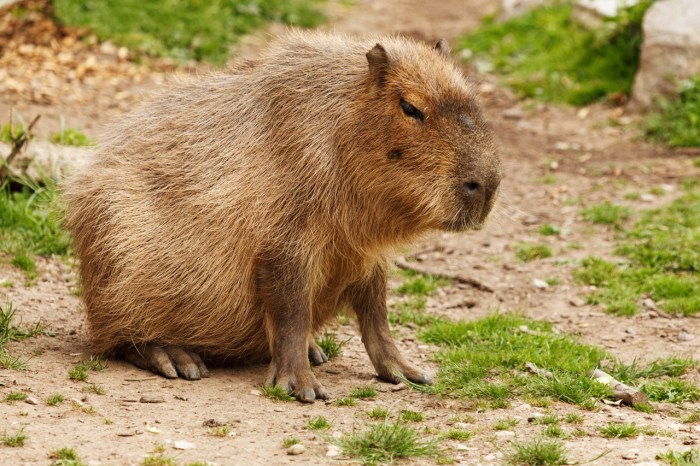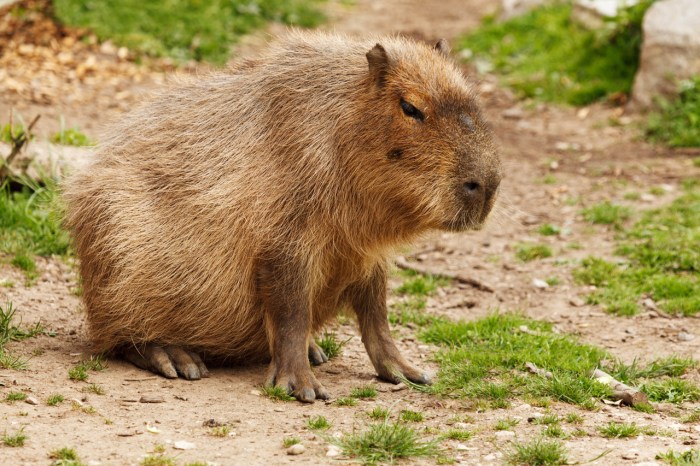Unique restaurants in Mexico offer a captivating glimpse into the country’s vibrant culinary landscape. From the historical influences that shaped its diverse flavors to the innovative techniques used by modern chefs, Mexico’s restaurants showcase a rich tapestry of regional specialties and modern interpretations. This exploration delves into the heart of the Mexican culinary experience, highlighting the unique ingredients, atmosphere, and sustainable practices that define these extraordinary dining destinations.
Mexico boasts a diverse culinary scene, with regional variations that reflect the country’s rich history and cultural heritage. This journey will uncover the inventive restaurants pushing boundaries, and showcase the dedication to preserving traditional flavors while embracing modern techniques. We’ll examine the restaurants’ ambiance and service, as well as the role of sustainability and indigenous ingredients in the experience.
Introduction to Unique Mexican Cuisine
Mexico’s culinary landscape is a vibrant tapestry woven from diverse threads of history, geography, and cultural exchange. From the ancient traditions of indigenous peoples to the influences of Spain and beyond, Mexican food reflects a rich and dynamic past. This fusion of flavors and techniques has resulted in a wide array of regional cuisines, each with its own distinct personality and appeal.
This exploration delves into the heart of Mexico’s culinary heritage, highlighting the fascinating diversity that defines its unique gastronomic identity.The evolution of Mexican cuisine is a captivating story of cultural fusion. Indigenous ingredients like maize, beans, squash, and chili peppers formed the bedrock of pre-Columbian diets. The arrival of the Spanish brought new techniques, livestock, and European spices, leading to a blending of culinary traditions that continues to this day.
This amalgamation of indigenous and European influences, alongside later contributions from other cultures, has created a complex and dynamic food system that continues to inspire and captivate the world.
Historical Influences on Mexican Food
Pre-Columbian societies in Mexico developed sophisticated agricultural practices, cultivating a wide variety of crops that became fundamental to their diets. Maize, beans, and squash were staples, forming the basis of many traditional dishes. The use of chili peppers, in various forms and intensities, was an integral part of both culinary and cultural practices. The introduction of European livestock, such as cattle and pigs, expanded the protein sources available.
Mexico boasts some truly unique restaurants, offering everything from innovative street food to upscale dining experiences. Planning a road trip, perhaps along the East Coast, is a great way to discover these hidden gems. Checking out some trip ideas on trip ideas road trips best east coast road could help you find the perfect route to sample some of the best Mexican cuisine.
Ultimately, exploring the diverse culinary scene is a must-do for any visitor to Mexico.
The Spanish conquest brought with it new ingredients, cooking methods, and culinary traditions. This exchange created a unique blend that gave birth to the modern Mexican cuisine we know and love today.
Regional Variations in Mexican Cuisine
Mexico’s diverse geography and historical experiences have fostered a rich array of regional culinary styles. From the coastal regions to the mountainous highlands, and from the deserts to the jungles, each region has developed unique ways of preparing food based on the available ingredients and cultural preferences. These regional differences stem from variations in climate, agricultural products, and cultural heritage, resulting in distinctive flavors and cooking techniques.
The following table provides a glimpse into the diverse culinary landscape.
Examples of Unique Regional Dishes
Several dishes represent the unique identities of Mexican regions. Mole Poblano, a complex sauce made with various ingredients, epitomizes the culinary traditions of Puebla. Tacos al Pastor, a popular street food, showcases the influence of Lebanese immigrants in Mexico City. Oaxaca’s cuisine features a wide array of unique dishes like Tlacoyos and Queso Fundido. Each dish tells a story of the region’s history and cultural heritage.
Comparison of Regional Cuisines
| Region | Key Ingredients | Preparation Methods | Cultural Significance |
|---|---|---|---|
| Oaxaca | Corn, beans, chiles, goat cheese, herbs | Slow-cooked stews, corn tortillas, mole sauces | Deeply rooted indigenous traditions, agricultural practices |
| Yucatán | Citrus fruits, cochinita pibil, seafood, achiote | Stews, marinades, roasted meats, tortillas | Influence of Mayan culture, use of local spices |
| Mexico City | Pork, beef, poultry, various cheeses, fresh vegetables | Tacos, stews, soups, mole sauces, various cooking techniques | Fusion of indigenous, Spanish, and other influences |
| Puebla | Chiles, tomatoes, herbs, nuts, spices | Mole sauces, stews, tamales | Known for complex and rich regional dishes |
Exploring Unique Restaurants
Mexico’s culinary landscape extends far beyond tacos and enchiladas. A vibrant scene of innovative chefs and restaurants is pushing the boundaries of traditional Mexican cuisine, experimenting with flavors, techniques, and ingredients. These establishments offer a unique gastronomic experience, often blending traditional recipes with modern interpretations.These unique restaurants aren’t just about showcasing a new take on familiar flavors; they’re about creating a complete dining experience.
From the thoughtfully curated ambiance to the expertly crafted dishes, each element contributes to the overall sensory journey. Understanding the price point is also crucial in selecting a restaurant that aligns with your budget and expectations.
Innovative Approaches to Mexican Cuisine
Mexican cuisine is rich with diverse regional variations. These innovative restaurants often draw inspiration from these diverse regional traditions, reinterpreting classic dishes in modern ways. They also incorporate global culinary influences, creating a fusion of tastes and textures. This results in a unique and exciting dining experience. Think molecular gastronomy techniques combined with traditional Mexican spices.
Unique Ingredients
The heart of these innovative restaurants lies in their ingredient choices. They often use less common, locally sourced, or foraged ingredients, adding depth and complexity to their dishes. Many use heirloom varieties of tomatoes, peppers, and other vegetables, providing a vibrant flavor profile. These restaurants frequently incorporate exotic fruits and herbs, which add a touch of mystery and intrigue to the culinary experience.
Mexico’s got some seriously unique restaurants, offering everything from innovative cuisine to traditional dishes with a modern twist. But have you ever wondered about the unusual pyramid in Memphis? It turns out there’s a fascinating story behind it, which you can explore by checking out this article on why is there a pyramid in memphis. Regardless of the mystery of the Memphis pyramid, Mexico’s culinary scene continues to amaze, making it a foodie paradise.
For example, some chefs might use prickly pear, nopales (cactus pads), or even native mushrooms.
Atmosphere and Ambiance
The ambiance of these unique restaurants often reflects the modern and innovative approach to the cuisine. They might feature minimalist décor with pops of vibrant color, showcasing local art and craftsmanship. Some restaurants are housed in historic buildings, preserving a sense of history while maintaining a contemporary feel. The lighting and music also play a crucial role in creating a welcoming and immersive atmosphere, allowing diners to fully appreciate the culinary journey.
For instance, a restaurant focusing on Oaxacan cuisine might feature traditional Talavera pottery or textiles integrated into the décor.
Price Points
Price points vary significantly among these unique restaurants. Factors like the use of premium ingredients, the complexity of preparation, and the level of service all contribute to the price. Restaurants focusing on a highly innovative approach with locally sourced, artisanal ingredients tend to be on the higher end. Meanwhile, restaurants with a focus on a modern interpretation of traditional dishes might be more budget-friendly, but still offering an elevated experience compared to more casual eateries.
Consider that a truly unique dining experience often comes with a price that reflects the quality of the ingredients and the expertise of the chefs.
Restaurant Comparison
| Restaurant | Specialty Dish | Price Range (USD) |
|---|---|---|
| “El Jardín Secreto” | Mole Poblano with Wagyu Beef | $50-$80 per person |
| “La Cocina de Frida” | Modern Tostadas with heirloom tomatoes and local cheeses | $30-$50 per person |
| “Los Sabores de Oaxaca” | Oaxacan-inspired tasting menu | $70-$100 per person |
Innovative Culinary Techniques
Mexican cuisine, renowned for its vibrant flavors and diverse regional variations, is undergoing a fascinating evolution. Unique restaurants are embracing modern culinary techniques, infusing traditional recipes with innovative approaches to elevate the dining experience. This fusion of ancient traditions and contemporary methods creates a dynamic and exciting culinary landscape.Contemporary Mexican chefs are not merely adapting traditional recipes; they are actively reimagining them.
This involves exploring new flavor combinations, textures, and presentation styles while staying true to the core principles of Mexican cuisine. The result is a delicious and sophisticated expression of Mexican culinary artistry.
Modern Culinary Techniques in Unique Mexican Restaurants
Innovative restaurants are employing a range of modern culinary techniques to enhance the taste, texture, and presentation of their dishes. These techniques often involve molecular gastronomy, sous vide cooking, and innovative preparations to achieve unique results. For instance, using foams or gels to add layers of flavor and visual appeal, or employing techniques like spherification to create visually stunning, texturally interesting bites.
Fusion of Traditional and Contemporary Cooking Styles
The blending of traditional and contemporary cooking styles is a hallmark of many unique Mexican restaurants. This fusion isn’t about abandoning tradition; rather, it’s about respectfully reimagining classic dishes with modern techniques. Traditional recipes provide the foundation, while contemporary methods enhance the experience, offering diners a fresh and engaging perspective on familiar favorites. For example, a mole sauce might be prepared with a modern sous vide technique, maintaining its rich, complex flavor while achieving a smoother texture.
Preparation Methods Employed by These Establishments
Unique Mexican restaurants employ a variety of preparation methods, carefully selecting techniques to complement the inherent flavors and textures of their ingredients. Sous vide cooking, often used for meats, ensures consistent doneness and tenderness. Molecular gastronomy techniques, like spherification, create unique and eye-catching presentations, adding another layer of excitement to the dining experience. These establishments often utilize techniques like smoking or grilling to enhance the natural flavors of the ingredients, offering a fresh take on classic preparations.
Specific Dishes Showcasing Innovative Techniques
Many dishes in these innovative restaurants showcase these innovative techniques. Here’s a glimpse into some of the dishes that demonstrate the integration of modern techniques into traditional Mexican culinary traditions.
| Technique | Dish | Unique Characteristic of the Technique |
|---|---|---|
| Sous Vide | Roasted Pork Tenderloin with Mole Poblano | Ensures perfectly cooked pork with a tender, moist texture, complemented by the rich and complex flavors of the mole. |
| Spherification | Avocado Crema with Lime Pearls | Creates visually stunning, delicate lime pearls that burst with flavor in the mouth, enhancing the creamy texture of the avocado. |
| Molecular Gastronomy | Churros with Spicy Chorizo Foam | Adds a light and airy spicy chorizo foam to the traditional churros, offering a surprising textural contrast. |
Experiences Beyond the Plate
Unique Mexican restaurants transcend the culinary experience, offering immersive cultural journeys. Beyond the exquisite flavors and innovative techniques, they provide a rich tapestry of ambiance, service, and atmosphere that elevates dining to an art form. The careful curation of each element—from the décor to the music—enhances the overall guest experience, transforming a meal into a memorable celebration of Mexican heritage.The true magic of these restaurants lies in their ability to transport diners beyond the plate.
Mexico’s got some seriously unique dining experiences, from street tacos bursting with flavor to upscale restaurants serving traditional dishes with a modern twist. Thinking about a trip? Well, United expanding service to Barbados ( united expanding service barbados ) might just give you the perfect excuse to add a few more amazing Mexican restaurants to your itinerary. No matter your taste, Mexico has something to tantalize your taste buds, guaranteeing a memorable culinary adventure.
They create an environment that evokes the spirit of Mexico, fostering a sense of connection to the country’s vibrant culture. The meticulous attention to detail in ambiance, service, and interactions with patrons makes these dining experiences truly unforgettable.
Cultural Immersion Through Ambiance
Mexican culture is deeply rooted in art, music, and vibrant social interactions. Unique restaurants often reflect this by meticulously crafting a space that evokes a sense of place. From the use of traditional textiles and pottery to the careful selection of lighting, the ambiance transports guests to a specific Mexican region or era. The incorporation of traditional elements, like hand-painted Talavera pottery or intricate woven tapestries, adds a layer of cultural richness, enhancing the overall experience.
Enhancing the Dining Experience Through Atmosphere
The atmosphere of a unique Mexican restaurant is carefully designed to complement the culinary offerings. The lighting, often incorporating warm, inviting hues, sets a mood that encourages conversation and relaxation. The selection of music, ranging from traditional mariachi to contemporary Latin rhythms, creates an evocative soundtrack to the dining experience. These elements contribute to a harmonious blend of sensory stimulation, fostering an environment where guests can fully appreciate the food and the cultural immersion.
Exceptional Service and Customer Interaction
Exceptional service is a hallmark of the best unique Mexican restaurants. Staff members are often trained to not only provide excellent service but also to engage with diners on a personal level, sharing stories and insights about Mexican culture. This personalized touch humanizes the dining experience, creating a sense of community and connection with the restaurant and its heritage.
Warm, attentive service combined with knowledge about the dishes and their origins enhances the appreciation of the culinary artistry.
Decor and Music in Creating a Unique Experience
Decor and music are powerful tools in crafting a unique dining experience. The carefully chosen décor evokes a sense of place, whether it’s the bustling atmosphere of a bustling marketplace or the serene ambiance of a colonial hacienda. The selection of music adds a layer of cultural authenticity. Live music, such as mariachi bands or traditional folk musicians, further elevates the ambiance and creates an unforgettable atmosphere.
Restaurants often use local, traditional music to set the mood, immersing diners in the sounds and rhythms of Mexico.
Comparison of Restaurant Atmospheres
| Restaurant | Atmosphere | Unique Features |
|---|---|---|
| La Casa de las Flores | Rustic, Colonial-era feel with warm lighting and hand-woven textiles. | Focus on authentic regional dishes from Oaxaca, with live Oaxacan music. |
| El Jardín Secreto | Modern, minimalist setting with vibrant colors and natural light. | Presentation-focused dishes with contemporary Mexican flavors, live mariachi music. |
| Cantina Guadalajara | Nostalgic, bustling cantina atmosphere with warm lighting and vibrant colors. | Traditional Mexican dishes with a lively atmosphere, live banda music. |
Sustainable Practices in Unique Restaurants

Beyond the exquisite flavors and innovative techniques, a growing number of unique Mexican restaurants are embracing sustainability. They’re not just focusing on delicious food; they’re actively minimizing their environmental footprint and supporting local communities. This commitment extends from ingredient sourcing to operational efficiency, creating a holistic approach to dining. This conscious approach resonates with discerning diners, who increasingly value restaurants that prioritize ethical and environmentally responsible practices.
Ingredient Sourcing Strategies
Many unique restaurants are carefully selecting ingredients from local farmers and producers. This reduces transportation emissions and supports local economies. Direct relationships with these suppliers often result in fresher, higher-quality ingredients, enhancing the dining experience. Farmers’ markets and community-supported agriculture (CSA) programs are increasingly utilized for procuring ingredients, showcasing a commitment to supporting local agricultural practices.
- Regional Specialties: Restaurants often feature seasonal produce and locally-sourced proteins, highlighting regional specialties and ensuring freshness. This aligns with the ethos of sustainability by minimizing food miles and supporting regional agricultural ecosystems.
- Reducing Food Waste: Clever menu design, portion control, and partnerships with food banks are some examples of strategies employed to minimize food waste. Restaurants might offer smaller portions, or provide ingredients for customers to take home, thus reducing the environmental impact of unused food.
- Sustainable Seafood: Restaurants are incorporating sustainable seafood choices, especially if they feature seafood dishes. They’re partnering with organizations promoting responsible fishing practices, ensuring the seafood they serve is caught or farmed in an environmentally friendly manner.
Eco-Friendly Operational Approaches
Sustainability extends beyond ingredient sourcing to encompass restaurant operations. Many unique restaurants are implementing energy-efficient practices, reducing water consumption, and minimizing waste. These efforts often contribute to a more responsible and harmonious environment for both the restaurant and its surrounding community.
- Waste Reduction: Composting programs, recycling initiatives, and the use of reusable containers are common strategies. Restaurants are actively reducing waste by incorporating eco-friendly practices in their daily operations. This encompasses recycling and composting programs, which significantly reduce the environmental impact of food service waste.
- Energy Efficiency: Utilizing LED lighting, energy-efficient appliances, and optimizing heating and cooling systems contribute to reducing energy consumption. These measures minimize the restaurant’s carbon footprint and lower operating costs, reflecting a commitment to sustainability.
- Water Conservation: Implementing water-saving technologies and practices in the kitchen, such as low-flow faucets and efficient dishwashing systems, significantly reduces water usage. This responsible use of water demonstrates a commitment to preserving resources.
Sustainable Practices Integrated into the Dining Experience
The integration of sustainable practices is often woven into the dining experience itself. Restaurants might provide information about the origin of ingredients, offer dishes featuring seasonal produce, or even provide educational materials about sustainable food choices.
- Transparency and Education: Restaurants often display information about the origin and sustainability of ingredients. This educates customers about their choices and reinforces the restaurant’s commitment to sustainable practices.
- Seasonal Menus: Rotating menus based on seasonal produce allows for the use of freshest ingredients, reducing food miles and waste. This demonstrates a sensitivity to the natural rhythms of the environment and supports local agriculture.
- Sustainable Packaging: Using biodegradable or compostable packaging for takeout orders is a practical way to minimize waste and promote sustainability. This choice extends the restaurant’s commitment to environmental responsibility to the customer’s experience beyond the dining room.
Sustainable Practices Showcase
| Sustainable Practice | Ingredients | Impact |
|---|---|---|
| Local sourcing of seasonal produce | Tomatoes, corn, zucchini | Reduced transportation emissions, support for local farmers |
| Composting program | Food scraps, vegetable waste | Reduced landfill waste, creation of nutrient-rich compost |
| Energy-efficient appliances | All kitchen appliances | Reduced energy consumption, lower operating costs |
Local and Indigenous Influences: Unique Restaurants In Mexico
Mexican cuisine boasts a rich tapestry woven from centuries of cultural exchange and innovation. From ancient Aztec traditions to the fusion of Spanish colonial flavors, the nation’s culinary landscape is a testament to its diverse heritage. This profound influence is evident in unique restaurants that embrace indigenous ingredients and techniques, ensuring that traditional flavors and knowledge are not lost to time.
These establishments are vital not only for preserving cultural heritage but also for supporting local communities and farmers.
Restaurants Highlighting Indigenous Ingredients, Unique restaurants in mexico
Many innovative restaurants across Mexico champion indigenous ingredients. These establishments often feature dishes that reflect the unique flavors and culinary traditions of specific regions. They are not merely serving food; they are preserving a living history, connecting consumers with the local agricultural landscape, and supporting the communities that produce these ingredients. For example, restaurants in Oaxaca frequently showcase heirloom corn varieties and traditional mole recipes, while those in Yucatán might feature ingredients like chicharrón de pescado and various types of tropical fruits.
Importance of Preserving Traditional Culinary Heritage
Preserving traditional culinary heritage is crucial for maintaining cultural identity and biodiversity. Indigenous ingredients often hold unique nutritional properties and are integral to the cultural practices of specific communities. Restaurants that feature these ingredients play a vital role in ensuring their survival and perpetuation. This includes educating consumers about the importance of these ingredients and the history behind them.
Role of Local Farmers and Producers
Local farmers and producers are the backbone of these unique restaurants. They provide the ingredients that form the foundation of the dishes, and in many cases, restaurants actively partner with them to ensure fair prices and sustainable practices. This direct connection between restaurant and producer fosters a strong local economy and supports the livelihood of farmers and their families.
It often includes direct sourcing from small-scale farms, supporting local economies and agricultural practices.
Significance in Supporting Local Communities
These restaurants are not merely culinary destinations; they are community hubs. They frequently employ local personnel, thereby providing employment opportunities and economic support to the surrounding communities. By purchasing ingredients directly from local farmers, they create a virtuous cycle of support that empowers communities and strengthens local economies. The restaurants often organize workshops and educational events to teach about the ingredients, cultural significance, and agricultural practices of the region.
Local Ingredients and Their Traditional Uses
| Local Ingredient | Traditional Use | Restaurant(s) |
|---|---|---|
| Corn (various varieties) | Base of many dishes, including tortillas, tamales, and various sauces | Various restaurants across Mexico, particularly in Oaxaca |
| Chili peppers (various types) | Essential component in sauces, stews, and marinades; integral part of the Mexican culinary identity | Numerous restaurants, especially those specializing in regional cuisine |
| Beans (various types) | A staple food, used in stews, soups, and fillings; often cooked with corn | Restaurants in regions with a strong agricultural tradition |
| Tomatoes (heirloom varieties) | Essential for sauces, salsas, and stews; vary widely in flavor and texture | Restaurants focused on regional Mexican cuisine, particularly those in Puebla |
| Avocados | Used in guacamole, salsas, and various dishes; a key part of Mexican cuisine | Many restaurants, with variations on the classic guacamole |
Presentation and Aesthetics

Beyond the flavors and textures, the visual appeal of a dish is crucial in a unique Mexican restaurant. The artistry of food presentation can elevate the dining experience, transforming a meal into an event. The skillful use of plating techniques and garnishes not only enhances the aesthetic but also adds another layer of culinary storytelling. A thoughtfully presented dish communicates the chef’s intention and the restaurant’s commitment to quality.The way food is arranged on a plate can evoke different emotions and perceptions.
From vibrant colors that pop against a neutral background to intricate designs that tell a story, the presentation plays a critical role in setting the stage for the dining experience. This is particularly true in unique Mexican restaurants, where the focus is often on showcasing the country’s rich culinary heritage in innovative and artistic ways.
Artistic Approaches to Food Presentation
Mexican cuisine, with its diverse regional influences, offers a vast palette of colors, textures, and flavors. Unique restaurants leverage these elements to create visually stunning presentations. Often, chefs incorporate local flora and fauna, using edible flowers, vibrant chili peppers, and fresh herbs as artistic garnishes. The use of contrasting colors and textures, such as smooth sauces with crispy toppings, creates visual interest.
Plating Techniques and Garnishes
The use of different plating techniques, such as layering, carving, or creating miniature sculptures with food, is common. These techniques not only enhance the visual appeal but also highlight the specific ingredients and their unique qualities. Garnishes play a vital role in the visual appeal of the dish, often serving as a finishing touch that adds color, texture, and flavor.
For example, a sprinkle of toasted sesame seeds or a delicate sprig of cilantro can dramatically transform the visual impact of a plate.
Examples of Creative Plating
A mole poblano, instead of being served in a traditional bowl, could be presented as a volcano of sauce, with the chicken nestled within, adorned with edible flowers and a sprinkle of toasted pepitas. A vibrant array of colorful salsas, each with a different flavor profile, could be presented as a miniature mosaic on a single plate. Or, a tlayuda could be presented as a work of art, with the toppings carefully arranged to create a beautiful, edible landscape.
Table: Plating Techniques, Dishes, and Visual Impact
| Plating Technique | Dish | Visual Impact |
|---|---|---|
| Layering | Tostadas with various toppings | Creates depth and visual interest, showcasing the different textures and colors of the toppings. |
| Carving | Roasted meats or vegetables | Adds an artistic touch, showcasing the craftsmanship and precision of the chef. |
| Miniature Sculptures | Tacos de cochinita pibil | Transforms the dish into a miniature work of art, highlighting the ingredients and the culinary skills. |
| Mosaic | Combination of salsas and vegetables | Creates a vibrant and eye-catching display, highlighting the range of flavors and colors. |
Wrap-Up
In conclusion, the unique restaurants in Mexico represent more than just places to eat; they are gateways to a rich cultural heritage. From the traditional flavors of Oaxaca to the innovative creations of Mexico City, each restaurant offers a unique dining experience. The dedication to sustainability and local ingredients, combined with innovative techniques, highlights the importance of preserving and celebrating Mexico’s rich culinary identity.
These establishments aren’t just restaurants; they’re experiences.




